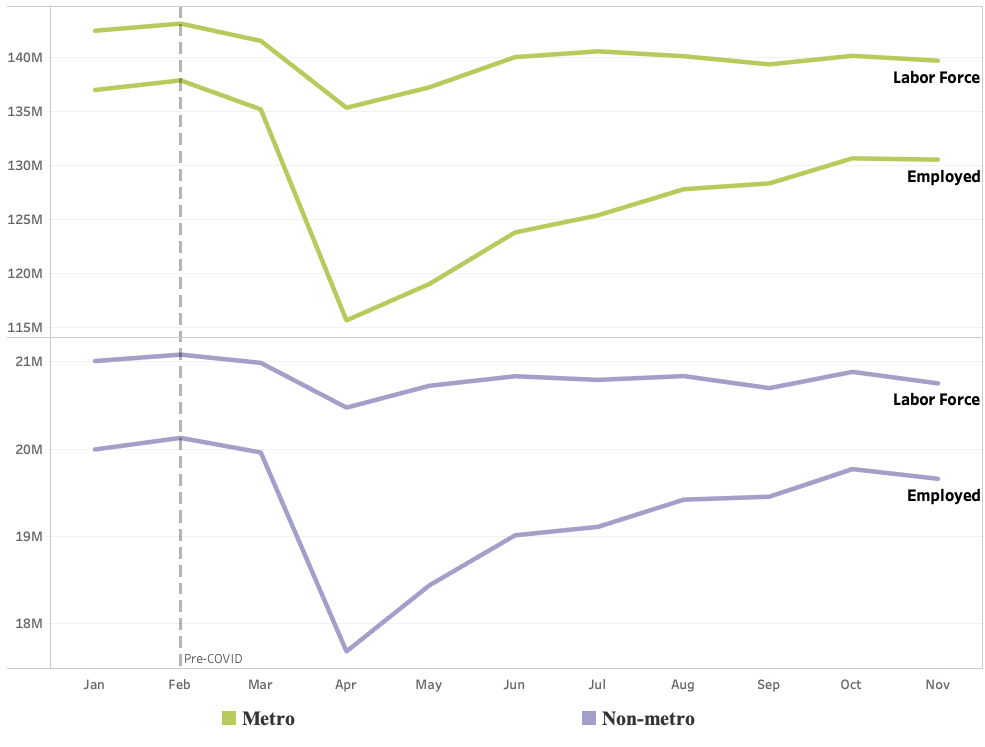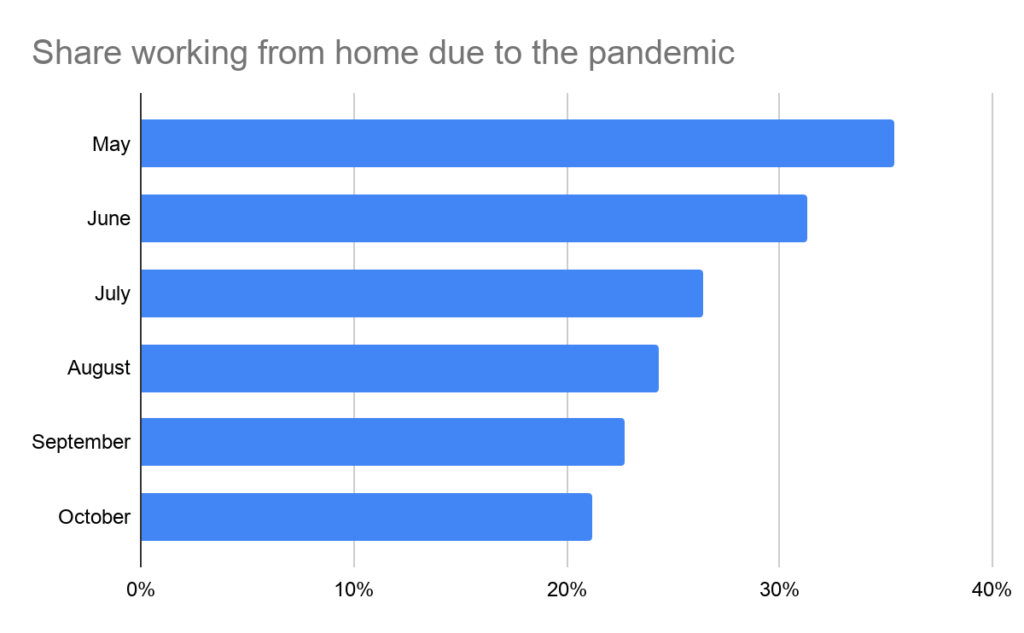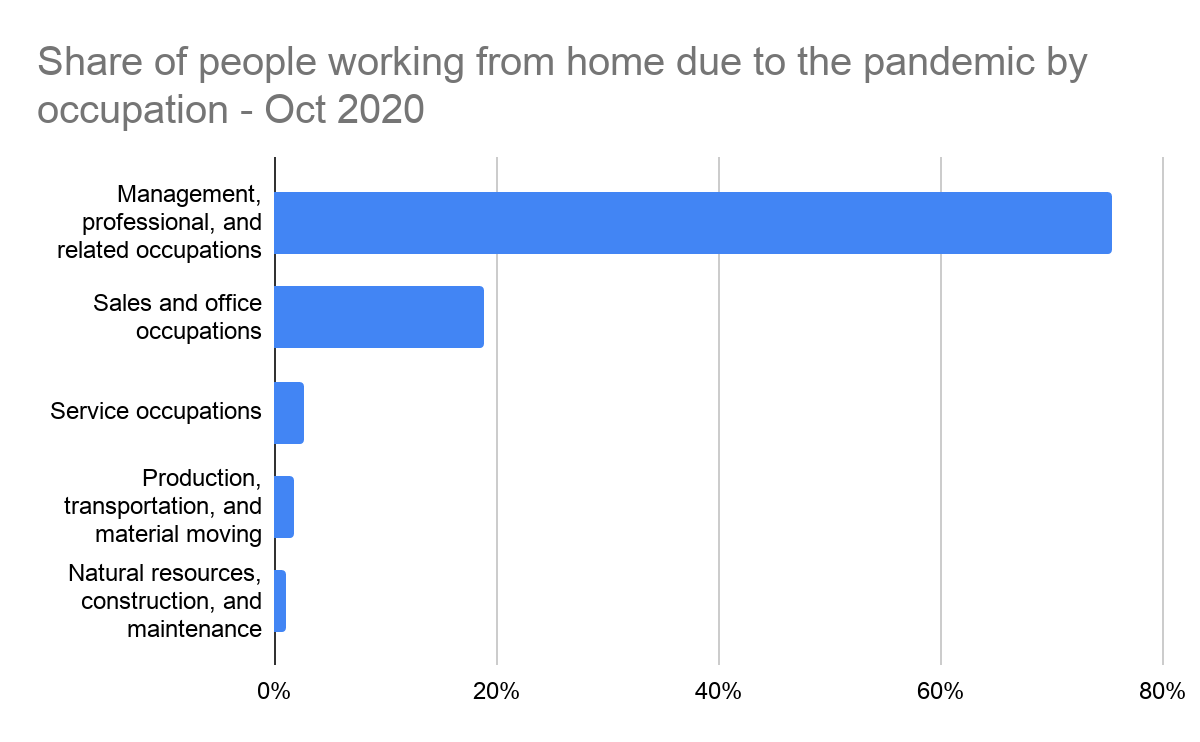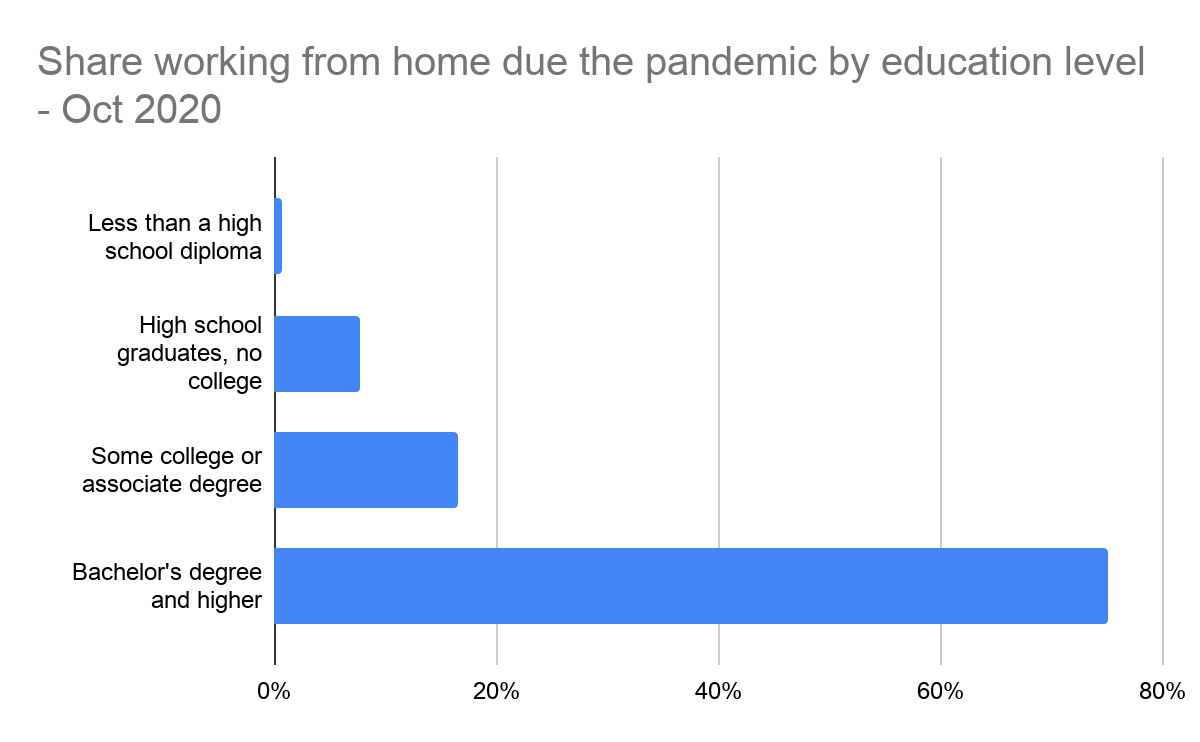CORI’s Employment Impact Update: September 2020
Each month in our Employment Impact Update, we share key findings, trends, detailed maps and analysis based on BLS monthly employment data to help you understand what’s happening to rural economies.
COVID-19 continues to have an unprecedented impact on the national economy. While the vast majority of pandemic-related coverage has focused on dense urban areas, smaller towns across the country have also felt deep health and economic shocks. Each month in our Employment Impact Update, we share key findings, trends, detailed maps and analysis based on BLS monthly employment data to help you understand what’s happening to rural economies.
Below are our key findings from the September data, released on October 28, 2020. You can also explore our employment impact map in full below.
Figure 1. Employment change (%) from February (pre-COVID) to September (current release).
Topline numbers
Non-metro
- Non-metro areas gained ~75k jobs from August to September, increasing the non-metro employment rate by 0.4% from the previous month. Overall, non-metro employment is still down 3% compared to February 2020.
Metro
- Metro areas gained ~500k jobs from August to September, increasing the metro employment 0.4% from the previous month. Overall, employment in metro areas is still down 7% compared to February 2020.
A still-slow economic recovery
The slow economic recovery in rural America continued in September. Overall employment in rural America increased by just 0.4% compared to August.
In September, just 512 non-metro counties (out of over 1,900 in the continental U.S.) had employment that exceeded February 2020 employment. And even those counties may not have fully recovered, given the roiling nature of the recession and the pandemic. Across the third quarter, just 259 rural counties had average employment that exceeded pre-pandemic employment.
Still, while the top line change in employment suggests stasis, the economy is changing beneath the surface the economy in ways that could have long-term implications for rural communities.
Remote work is providing employment opportunities, but not for everyone
As the pandemic hit, remote work grew to unprecedented heights. In many cases, people were able to keep their jobs (while protecting their health) because they were able to carry out their roles online. The ability to work remotely has been especially critical for parents, who in many states have to balance work with the responsibilities of helping their kids with distance learning.
Since May, the Bureau of Labor Statistics has asked survey respondents whether they had worked from home because of the pandemic in the previous month. In May, 35% of respondents said they had. (This does not include people who were working from home prior to the pandemic.)
As many states relaxed stay-at-home orders and workplace restrictions over the summer, the share of respondents reporting working from home fell to just over 21% in October. Even at 21%, this represents a profound shift in the economy. Prior to the pandemic, BLS estimated that just 16% of workers worked from home.
Taking the pandemic-driven remote workers and long-term remote together, the data suggests that over 33% of those employed worked remotely in October. A recent survey from Gallup found an even greater prevalence of remote work than the BLS survey did, reporting that more than half of all workers worked from home at least some of the time in September.
Yet, the opportunity to transition to remote work is not available to every employee in every place — and the data bears out that opportunity divide.
In October, 75% of the workers who worked from home because of the pandemic were in management, professional, or related occupations. Compounding the divide, these workers are heavily geographically concentrated, with rural Americans making up just 10% of workers in this occupation group in 2018.
This severe segregation of remote work opportunities also breaks down along educational lines. About 75% of people who worked from home in October because of the pandemic have a bachelor degree or higher, suggesting again that the remote work “boom” was far from widespread.
Similarly, opportunities to transition to remote work seem to vary across racial groups, matching the differences in occupation among racial groups. In October, over 35% of Asian workers worked from home because of the pandemic, compared to just 21% of white workers, 18% of black workers, and 13% of Hispanic/Latino workers.
Remote work and the path forward
Understanding the dynamics of remote work is critical to understanding the impacts of the pandemic recession — and its associated inequities. While the availability of remote work has allowed nearly 50 million workers to continue working at some point during the pandemic, not everyone has been offered the same opportunity.
Those who were already doing the best economically and living in the most prosperous places have made the easiest transition to remote work; those living in areas without broadband or working in low-wage jobs that can only be done in-person have not been able to make the same transition.
To avoid and reverse this continued inequality along the all too familiar lines of geography, race, and education, we need both to take steps to address the pandemic and to ensure more equitable access to remote work opportunities. Universal broadband is a necessary first step, and one that should be accompanied with digital literacy training, remote work certifications, and investment in new jobs focused on people and places that have been structurally precluded from the remote work boom.
The public health crisis is, unfortunately, not going away anytime soon, and neither is the accelerating transition to the digital economy. Moving forward, we must make sure everyone can participate in our changing economy.
Rural data matters
We’re in the midst of an economic crisis, and we aim to use these monthly datasets, in conjunction with our on-the-ground-knowledge and rural expertise, to help understand and predict what’s next for rural America–and equip leaders and policymakers with the tools to respond effectively. That’s why rural data like this is so important.
This data and our visualizations provide crucial insights into understanding what’s happening in rural America—insights that urban-focused or aggregated data often omit. If you’re a community leader looking to integrate this data to communicate with local stakeholders, see our tips for using data to tell your story.
Stay connected
And if you’re looking to respond to this economic crisis by pivoting to a more resilient digital economy, check out our toolkit for assessing your digital ecosystem, or contact us to learn how we can help.





